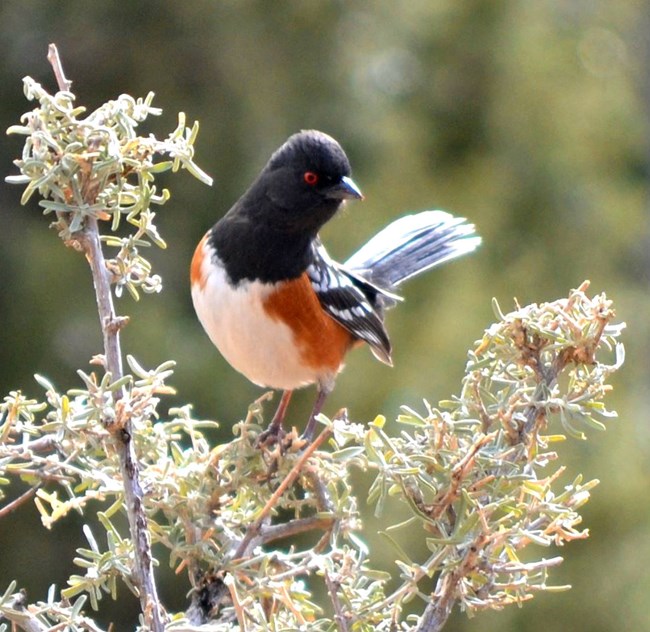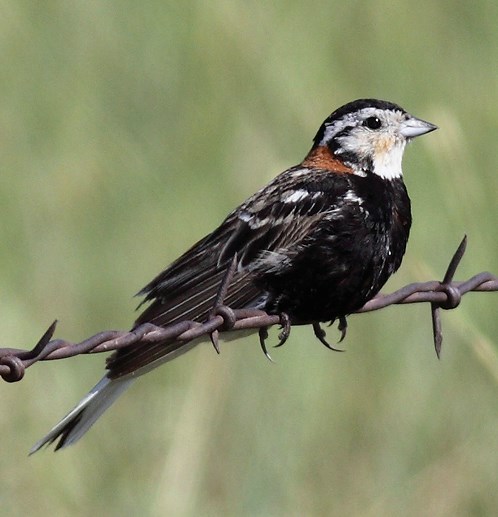Last updated: October 24, 2018
Article
Landbird Monitoring at Theodore Roosevelt National Park

NPS/Grand Canyon National Park
Overview
Theodore Roosevelt National Park encompasses over 70,000 acres of prairies, badlands, and riparian habitat. The Little Missouri River winds through all three units of the park and attracts numerous bird species to its floodplain cottonwood forest.
The Northern Great Plains Inventory and Monitoring Network developed a bird monitoring protocol jointly with Bird Conservancy of the Rockies (formerly the Rocky Mountain Bird Observatory). A panel design where grids are sampled on a rotation schedule was developed to facilitate complete coverage such a large park. The basic sampling unit is a 1 square km grid that contains evenly-spaced sample points, separated by 250 m. Observers stand at pre-determined fixed points and record birds observed or heard over a 6-minute period. After completing the survey, observers navigate to the next point using GPS units.
Landbird surveys have been conducted at Theodore Roosevelt National Park since the 2013 breeding season. This research is the beginning of a long-term effort to monitor species trends and densities. In 2016, a total of 3,216 birds representing 69 species were recorded during surveys.

NPS
Monitoring Highlights (2016)
- The spotted towhee was the most common species (11% of birds detected).
- Other common species included the western meadowlark (10%), field sparrow (9%), mourning dove (7%), grasshopper sparrow (5%), and yellow-breasted chat (6%).
- Species that were recorded for the first time since monitoring began were the bald eagle, chestnut-collared longspur, common poorwill, common raven, pine siskin, savannah sparrow, and yellow-headed blackbird.

© Terry Sohl
Interesting Fact
The chestnut-collared longspur (Calcarius ornatus) was detected during landbird surveys at Theodore Roosevelt National Park. It is a small ground feeding bird that primarily eats seeds and historically nested in areas recently grazed by bison or disturbed by fire. Today, it prefers shortgrass plains and will often use mowed areas such as airstrips or grazed native prairie habitats. According to the North American Breeding Bird Survey, longspur populations have declined by 82% since 1966 and are listed as a species at risk of extinction without significant conservation action.
For More Information
Protocol Contact, Northern Great Plains Inventory and Monitoring Network
Angela JardingLinks
Rocky Mountain Avian Data Center
Summary by Angela Jarding March 2017
View the list of birds detected at this park by downloading the 2016 PDF from the NPS Data Store
